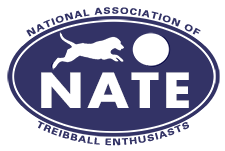Other
dogs, cars, people, and squirrels, just to name a few, can challenge even
the best dog's focus on an outdoor field. Below are some strategies to keep your dog's attention on
you and the game anytime the distractions become an issue.
In
essence, this is an extension of Impulse Control.
Some of the solutions for Impulse control will also help with
maintaining your dog's focus on you and the task at hand.
The
key to take your dog to as many new places and situations as
possible. While there, ask for performances of solid known behaviors such as Sit, Down, Spin, etc. Use liberal amounts of reinforcers, such as food, toy, and praise, when the dog is calm and focused on you in the situation.
One of our NATE Training Resources Tip of the Week- Getting your Dog’s Focus
Getting
you dog’s full attention is an important part of training. Teaching the Look or Watch Me is used when you need your dog to pay close
attention to you even when there are distractions. It is especially
helpful for those who participate in dog sports and work as a team.
Teaching your dog to focus makes it much easier to communicate and makes
it easier for them to follow your instructions.
In the video below Monica
Pielage demonstrates this tip by shaping eye contact at
home to teach the behavior and then practicing in a
distracting environment.
